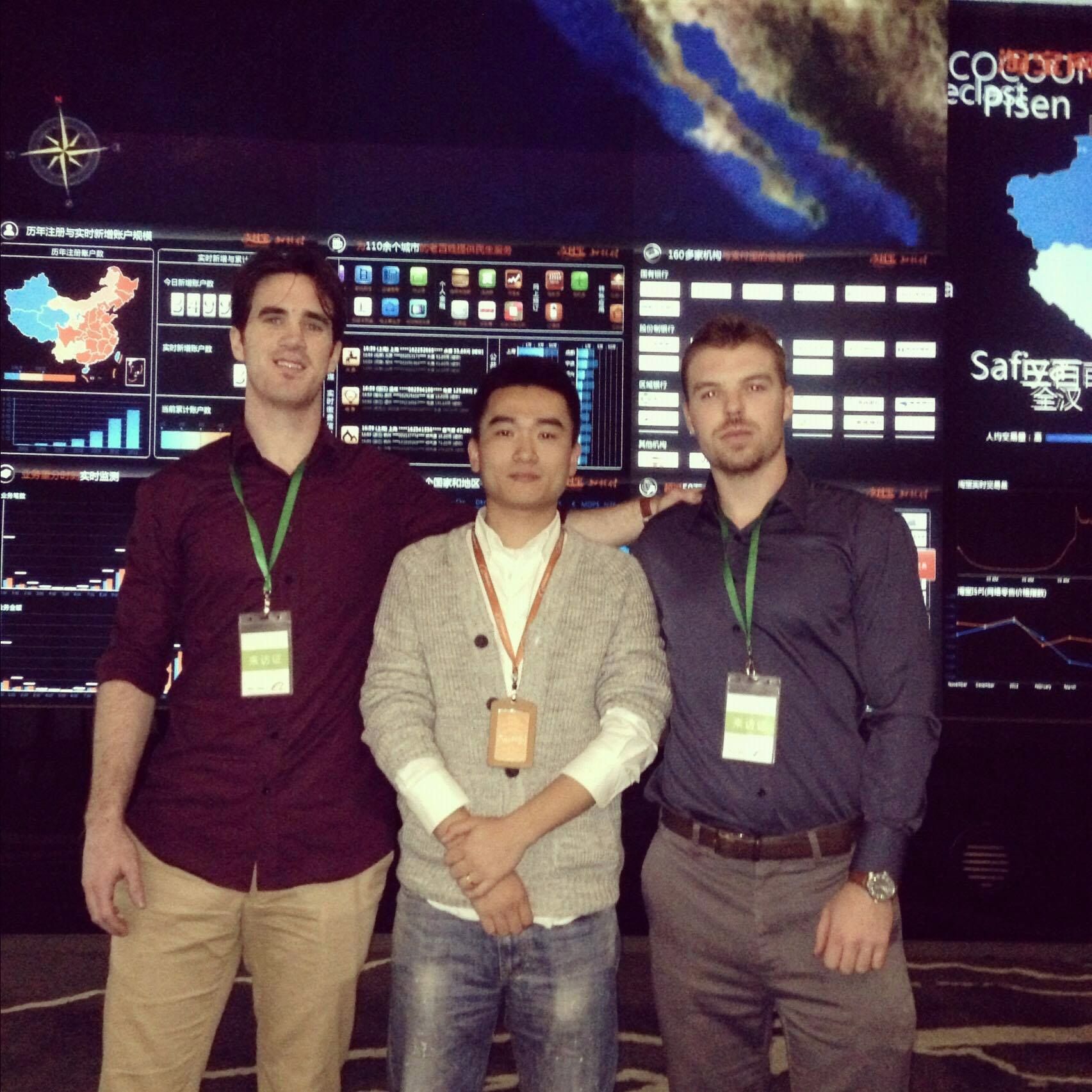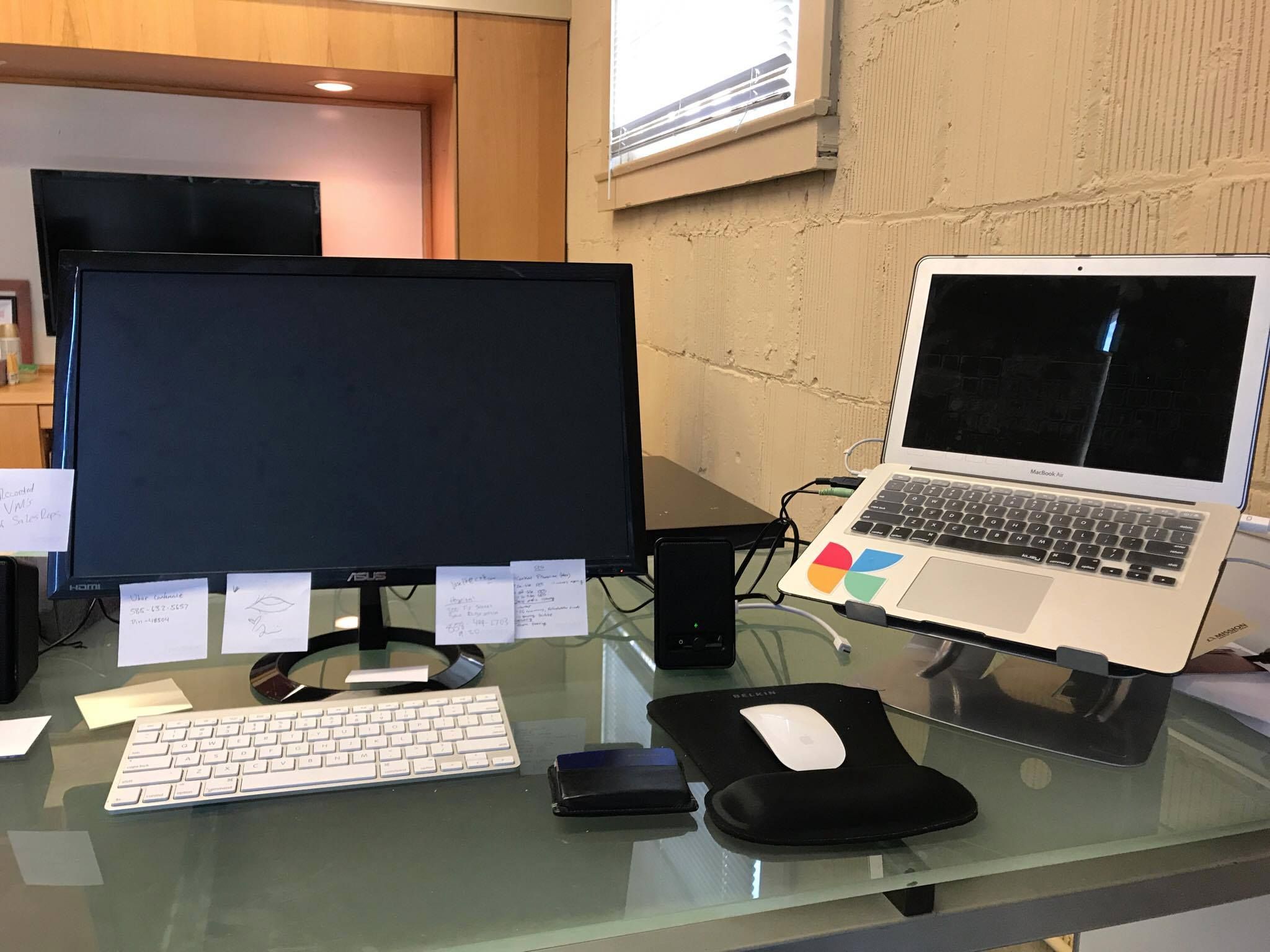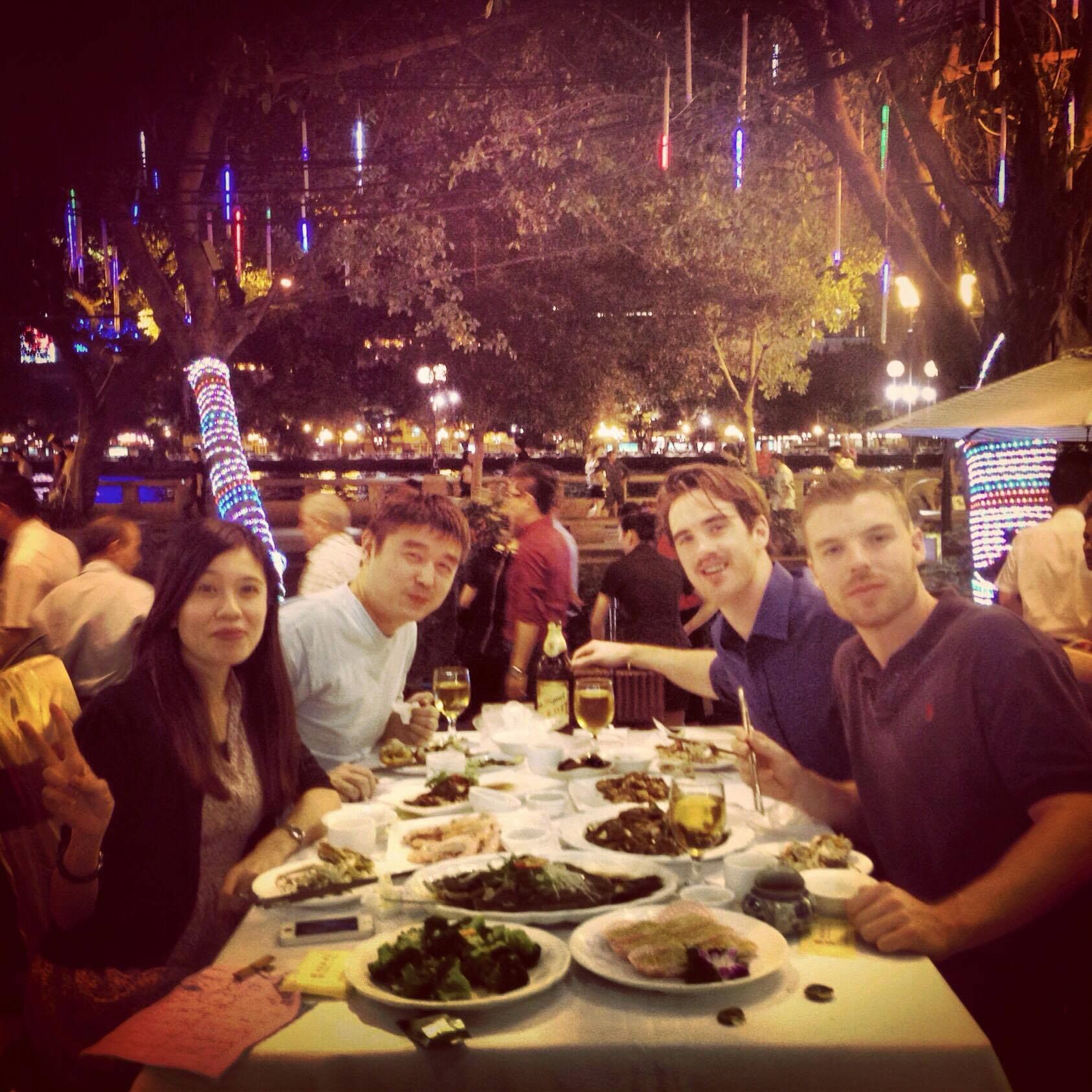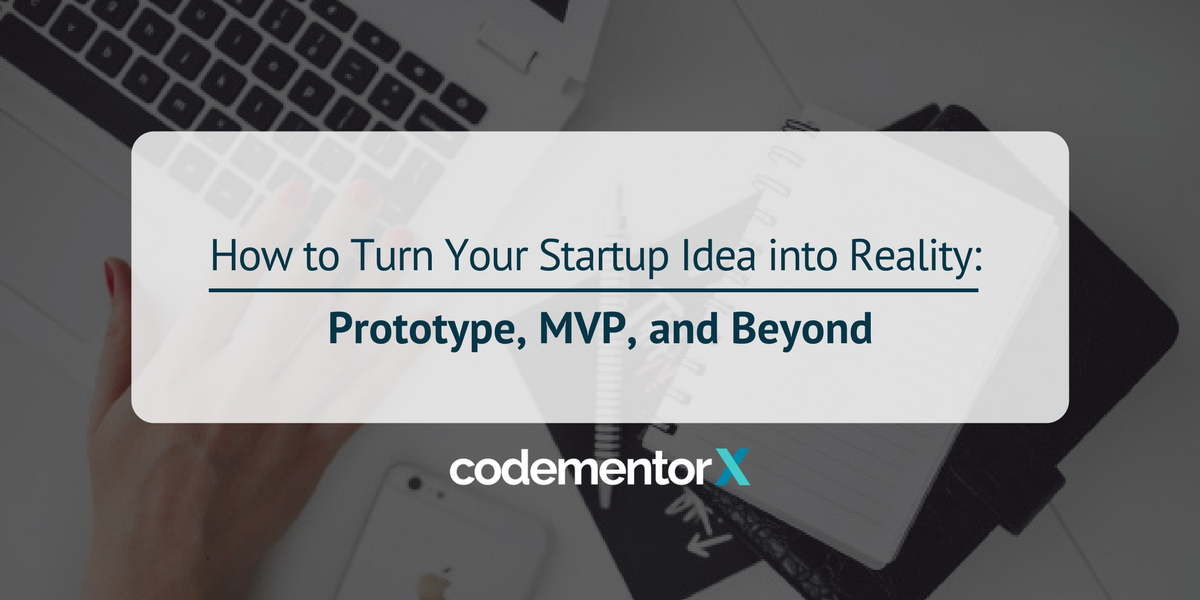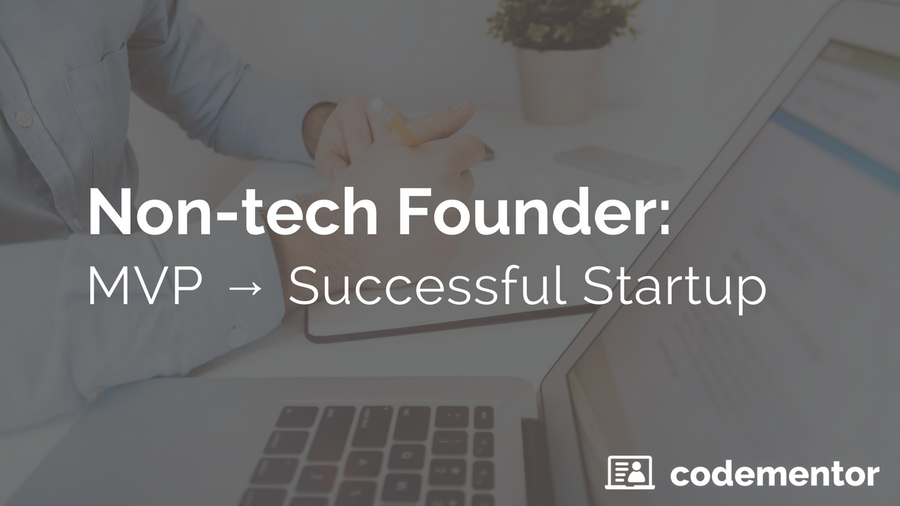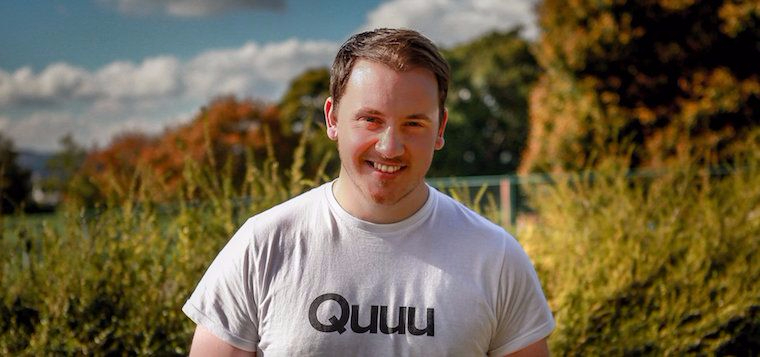"We were quoted $35K. We ended up spending over $100K, and we walked away with an unfinished project." Casey Mathews, founder of Kicksta, paused, allowing the shock of his statement to set in.
Today, Kicksta is a thriving software business with $100K MRR, and a growing team built to scale. But it was clear in our conversation with him that it took time and many hurdles to get there.
In this tell-all interview, Mathews tells us how he and his business partner grew Kicksta from a free service into a $100k MRR SaaS business, and he touches on the need to be over-the-top in your details of wireframing, the importance of not delegating management too early, and lessons learned from a $35K project expense turning into $100K.
Ideas Come from The Strangest Places: From Side-Hustle to Validated Venture
It was the bright and bustling city of Guangzhou, China, early 2015. Mathews was an entrepreneurial expat traveling and working alongside other like minded people including his future founder Ronan Galvin and a client, Original Grain.
"We were there helping them with sourcing for their wood and steel watch company. They had just had a successful Kickstarter campaign, but they were just getting into Instagram," says Mathews. “They realized that while their account wasn’t huge, they were getting great engagement and getting a lot of sales from not a lot of followers and so they were really interested in growing that Instagram following.”
They asked Mathews if he could help grow it, and Mathews got to work manually managing Original Grain’s Instagram account.
His manual methods (engaging with accounts that had a similar audience) began to pay off. "Initially, they went from getting around 15-20 followers per day organically to around 50-100 per day with me really just messing around," says Mathews.
"After about two weeks of being pretty hands on, I decided I couldn’t do this forever," he states. “I was engaging around 800-900 accounts a day doing a couple of hours worth of work. It wasn’t something I was getting paid to do, but it got me thinking that there had to be a way to execute this more efficiently.”
With the idea of scaling in mind, Mathews set out to find a software tool that would help him in this endeavor. After researching and some testing, he settled on two tools that allowed him to optimize and speed up the process that he was currently doing while getting similar results.
"When I first started doing this, it wasn’t for income or anything I thought could become a real business. But after seeing the success we had with Original Grain, my business partner Ronan and I pursued offering a similar service to others like Original Grain."
What started as friends helping each other out soon slid into a consulting side-hustle where Mathews and Galvin began working with other people who launched good Kickstarter campaigns but who needed help growing their following on Instagram.
Thus the initial start of Kicksta came to be. "We worked like this with the 2 platforms for about 6 months and had about 30-40 clients doing this sort of consulting." explains Mathews. “But the tools we were using really didn’t work well together or have all the features that we needed.”
The initial groundwork they laid for Kicksta allowed them to get this far, but it was stretching their limits for output. And after building a small but profitable business of $5K MRR, Mathews and his partner wanted to scale.
"I knew that if we continued with this same model and using other people’s software, we were going to be very limited in what we could do and how much we could grow," accounts Mathews, listing how the costs of the other platforms and their lack of collaboration or integrating created many time-consuming sticking points in their business.
It was time to build their own, single software platform that helped them execute their entire process easily. It didn’t take long for them to realize that in order to do that, they needed to hire a developer.
Building Software Without Technical Expertise: First, How Do You Find The Right Developer?
Mathews mentioned that they knew they wanted to "find a developer that [could] combine the two software platforms they had used and add a few more improvements that neither had." But being non-technical, they didn’t know where to start searching.
So they started doing some research to find their heading. "I got into online forums and other places online where discussions were going on about the two softwares I was using," states Mathews. Doing this type of research allowed him to figure out what code was involved with creating the software they wanted developed which helped them in their search for the right person.
After the initial online research, which didn’t take too much time, they began getting in touch with developers through sites like Elance (now Upwork) and through referrals from other people.
"In total, we talked to about 25 different developers," he states, noting that the process took longer than expected. However, these interviews were more enlightening than draining and helped them apply a filter to their process.
"Early on we decided that we wanted someone who had worked with Instagram or social media before," he explains. “Instagram has a different set of rules and parameters, so understanding the possibilities and logic can save a significant amount of time.”
While many whom they talked with were either outside of their budget or hadn’t worked with social media, Mathews said that the conversations with other developers gave them ideas for where to look, features worth considering, and other tidbits of knowledge they wouldn’t have learned otherwise.
"The more people we talked to, the better we knew what we wanted," he states. “I got rather picky; I knew I wanted to find someone who had built something in the past similar to what we needed now.”
As interview after interview happened, Mathews and his business partner came to the conclusion that on top of finding a developer who had worked with social media before, they would also need to go with someone outside the U.S. to stay in their budget.
With the research under their belt and a way to filter their prospects, Mathews soon found a developer who fit the bill.
Looking for a developer to work on one of your projects? A member from our team will help you find the best developer for what you're building. Learn more here.
Building Version 1: The First Developer
Vital Lessons for Non-Technical Founders Working with Developers For the First Time
"We finally found someone in the Ukraine who had created something similar to what we were looking to build and he came in under budget."
As you can imagine, finally finding the right developer who matched their criteria was exciting for Mathews and Galvin, and things began to pick up.
"From start to finish, it took about 3 to 4 months for us to get the first version of our software," he states. To many, this timeline would have them over the moon, but Mathews explains that there were still some hurdles.
For instance, the timezone difference created some complications, but the biggest issues stemmed from the language barrier.
With a developer from the Ukraine, English was not his first language. When they chose to go the route of hiring outside of the U.S. Mathews explained that they knew they had to find someone who had worked with social media or built something similar because, "there wouldn’t be as much need to explain what needed to happen; the developer would already know a lot of how to create the software."
But there were other lessons to be learned.
"Wireframe every click. Turn over every little stone you can think of," Mathews said emphatically. Working with a non-english speaker can undoubtedly create issues with communication and understanding. But pictures tend to do more in conveying thought, as Mathews was quick to learn.
Instead of communicating only with written or verbal descriptions, he sat down to wireframe the software screen by screen, and then hand that over to the developer to take from there. "I promise you, doing it this way will save you time and money," he says.
With the first version of the software under their belt, Mathews wanted to keep up momentum by adding more features as they came up.
But once those features began to be outside the scope of what their developer had experience with doing, it was evident that while their current developer was willing to do upkeep on the current software he created, they would need to find another developer or dev team to help them expand the product moving forward.
Key Takeaway From This Section
"Wireframe every single click." This is perhaps one of the biggest lessons to keep in mind. Mathews considers this step as a crucial one, especially for a non-technical founder.
During the interview, Mathews states more than once the importance of this part no matter who you work with. The better and more detailed you are here, the better the user experience will be, and the less money you will end up spend in back and forth communications with your developer.
Other Lessons To Bookmark
- If you’re non-technical, "do your research." Get online, meet with other developers and ask for referrals. The more people you talk to, even if you don’t hire them, the more you will learn and easier it will be to figure out exactly where to look and who you really want to develop your product.
Codementor can take a lot of the legwork out of finding a developer for your project - talk to one of our development consultants. Learn more here.
-
"Establish a filter." (i.e it’s okay to be picky) For Mathews, the filter was an important part of the research and vetting process. For them, this filter required finding someone who had worked in social media; someone who had built something in the past similar to what they needed now. As they spoke with more people, they were able to nail down what they wanted and what they didn’t want when working with a developer which helped to eventually streamline getting their V1 product created quickly.
-
"Develop a relationship with your developer." This was especially important with an international hire. Mathews explained that he even managed to meet the developer they hired and hang out in the Ukraine for a couple days while working on the project together which “helped with the responsiveness” of the relationship.
Building Version 2: Adding Features That Flopped
A Cautionary Tale on Attention to Details, Scope Creep, and Moving Forward
The first version of their product was complete now had them up and running with a $50 MRR.
The current software they had functioned mainly as an administrative tool that allowed the Kicksta team to streamline their work process for clients. What they now needed to create was a client facing "front-end" portal to help give customers a more hand on approach and free up the team time in some aspects to allow for further growth of the business.
In need of a new developer, Mathews and Galvin were back to the drawing board, but this time they had a little bit more knowledge as far as what to look for and more money to put into the next version.
"We went to a dev shop in San Francisco and knew what we wanted," states Mathews. “We met with about 5 or 6 developers and teams.”
Mathews again had his filter in place. They wanted someone who came in on or under budget with a background in developer client-facing portals. After some review, they decided to go with a local, budget conscious development team who appeared to offer everything they were looking for.
At the time, working with this team compared to a lot of the back and forth that happened with the first developer gave Mathews the impression that getting version 2 made was going to be, "super easy."
At this point, Mathews and Galvin had also brought on a project manager with a background in tech to help with the overall management for getting this product made.
"After I had done my part [like the wireframing and meetings], I sort of stepped back and tried to not stress out too much about things." Mathews related that, in part, this where the error started.
"I relaxed too much. If I had been more involved [in the meetings and with the development team] I likely would have recognized the problems that were starting to add up to a lot of money."
Since the team they hired quoted their work by the hour, they quickly hit their initial quota of the $35K without a finished product.
Mathews relates this happened due to a lot of back and forth that happened of small details being overlooked that stacked up the hours and increased their spend on the project.
This back and forth happened over the course of 6 months and landed Kicksta way over more than 200% over budget. Mathews ultimately decided to cut ties with the development team and walked away without a finished product.
Key Lessons From Building Version 2
Set clear, definable expectations. The lack of expectations and key details added up in cost and unneeded stress for Mathews and his team.
"If there is one key thing I think anyone reading this should walk away with understanding is this: Setting expectations in the price point, in the quality of the product, and that you're getting quoted for everything you actually need is vital."
Have an ironclad UX and Wireframe.
"I thought I had wireframe everything," Mathews says, but in hindsight he knows what he would have done differently. When working on a bigger project, attention to detail and wireframing become more and more important.”
"Run through the user journey. Understand every single click. Do it again, and then go back and do it again."
He explained that doing this you’ll pick up on a lot of intricate details you may have missed. In developed V2 of their product, there were action pages like "wrong username“, two-step authentications if someone used Google to sign up, and a lot of finer details that needed to be apart of the software but weren’t included in his first wireframes.
Other Lessons To Bookmark
-
Don’t take a step back on management, especially as the founder. It can be easier and less stressful to be the guy looking over everyone’s shoulders, but in a larger project with more involved and at stake, you really should take a step back. Be as involved as you can be, show up to all the meetings, be involved in the presentations of the sprints.
-
Flat rate quotes don’t really work. "It’s going to be more, always." He states. “Especially if you’re working with a U.S. team or person.” Understanding that you’re going to pay more than what you’re quoted can help with being realistic in your expectations.
How It All Turned Out
"We broke ties with the San Francisco dev company and after the expensive lesson and life stage of our company, we hired a CTO. We still plan on working with freelance developers, and over the last year we have built relationships with a number of great ones. Currently, we are working on expanding our services to other social media platforms as well as provide deeper analytic solutions for influencer campaigns."
As it stands, Kicksta as has yet to finalize the client facing portal product. However, the first version of the software has still allowed Kicksta to grow to $100K MRR business, making a viable million-dollar operation that continues to grow today.
Depending on where you are in your journey, you may find this story will not only teach you a few lessons but also help you think differently about your approach to building your product.
A final note from Mathews to any other non-technical co-founders weary of making the leap, is this:
"Before spending too much money, validate your idea via SALES. After that, run fast.. you'll continually learn as you go and if the service or product is solving a lasting pain point, you have time to locate and compensate the talent necessary to optimize and innovate to keep running."
Don't make the same development mistakes - our team can help you find the best developers to work on your project. Learn more here.


